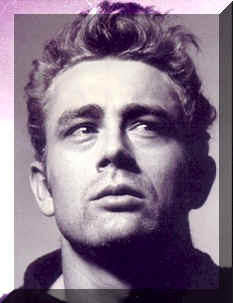


K. Santhaa Reddy,Member, National Commission for Women
History seems to attract so much debate in India that possibly no one wants to talk about it. Devadasis form a part of our history. A part, that we seem to be ashamed to admit. Discussing something like this is just not done in good company. English-speaking society in India has painted devadasis as prostitutes. Governments are committed to abolition of this “evil” practice, which according to general impression was a cover for religious prostitution. Naturally, the civil society of urban India would rather like to forget this dark footnote to Indian history or in some cases use it to just attack the “uncivilized barbaric non-religion” called Hinduism.
No one else in history seems to have been as much misunderstood as devadasis. No one has been as badly maligned as devadasis. There can be no other example of the truth being twisted in a most blatant manner.
The truth is that devadasis were an essential part of Indian temples. They performed useful functions at temples like cleaning of temples, lighting lamps, dressing the deities etc. They sang devotional songs and danced in devotion to the deities. They taught music and dance to girls. They kept alive and developed a tradition of classical music and dance. Beyond these historical facts is a vast area of myths and false propaganda.
When the Europeans first arrived in India, they were surprised to see girls who sang and danced in temples. They called these girls as “nautch-girls”. For a European mind, a dancing girl could be just an entertainer performing for the pleasure of rich men. The idea of art as an offering to God was unknown to them. To their medieval mindset, a dancing girl was showing off her body and was no better than a prostitute. Yet, there is no mention in any historical book written by early European visitors to indicate any evidence of prostitution on the part of “temple-maids” or “nautch-girls”.
In 1892 an appeal was made to the Viceroy and Governor General of India and to the Governor of Madras. The appeal for the first time mentioned, “That there exists in the Indian community a class of women community commonly known as nautch-girls. And that these women are invariably prostitutes”. The appeal was made by an organization called “Hindu Social Reforms Associations”. This was a part of “Anti-nautch movement”. The people behind the movement included some missionaries.
The replies received from the Governor of Madras and from the Viceroy denied the allegation that the “nautch-girls” were prostitutes. Yet these so-called reformists continued their “reform movement”. It was customary in those days to invite devadasis to every festivity in well-to-do families for singing devotional songs and for dancing. The so-called reformists started campaigning against this practice.
From all historical records, it appears that till that point of time a devadasi was a respected member of the community. She was considered auspicious. A bead from her necklace was essential for the managalsutra of any bride. (This practice continued till very recent times. At the time of my marriage, a bead was got from a devadasi). Such a respected member of the community was sought to be painted black and converted into an immoral prostitute.
No one knows the motivation behind maligning devadasis. Here was a poor woman who was dependent on the community; who had hardly any land; who had no organization or support from the Government. She faced the organized power of the urban, educated groups who were backed by the ruling class. Her basic livelihood was threatened. She could do nothing about it. Slowly, she was left with no means to keep her body and life together. In due course, the malicious false statements became true. Devadasi, left with no other means of survival, had to become a prostitute.
This was neither an easy journey nor was it complete. Many devadasis took to prostitution, but there were many more who resisted. A large number took on male patrons to whom they were generally loyal. Recent surveys and studies have confirmed that a majority of former devadasis is engaged in some work like agricultural labour or is working as coolies.
Last year I visited Andhra Pradesh, Karnataka and Maharashtra for conducting public hearings on the subject of Devadasis. There were six public hearings (two in each state). At every public hearing, the women demanded that they should not be branded as prostitutes. They did not know that their demand involved undoing a propaganda carried out for more than a century. They are carrying on their struggle for dignity well aware of the fact that they belong to an institution on the verge of extinction.
There is no doubt that the institution of devadasis is dying or is almost dead. It could not and should not have survived after temples ceased to occupy their place of glory. Yet, it survived and caused untold misery to the affected women. There are less than fifty thousand devadasis (including former devadasis) in the country today. Most of them are not practicing any of the customs associated with devadasis. The institution of devadasis cannot be revived since the supporting institutions have ceased to exist. Soon devadasis will be a subject of history.
On their way to the pages of history, these women are demanding justice. In an attempt to slander temples and Hinduism, these women were defamed in the worst possible way. The women who kept dances like Bharatnatyam and Odisee alive for centuries deserve a honourable mention in the pages of history.
While we recount the so-called reformist movement, we must also remember the Revival Movement, which received strong support from Theosophical Society of India. This movement did not revive the devadasi practice. Instead it preserved the classical music and dance of devadasis. It was due to this movement that the art of Sadir (traditional dance of devadasis in Tamil Nadu) evolved into Bharatnatyam. Rukmini Arundale, who took up the cause of evolution of Sadir into Bharatnatyam, was groomed and encouraged by Annie Besant.
The present day devadasi is a shadow of her former self. She works as a manual labourer and lives with a man who cannot or does not marry her. She needs our assistance to live a life of dignity. But even when we extend the hand to help her, let us give her due dignity that every woman deserves. Let us look at her with compassion rather than moral condemnation.
The present day devadasi needs empathy and rehabilitation. But the devadasi in the pages of history needs neither of the two. She demands her rightful place as an artist as an upholder of classical arts. Let us change our view of history and get over the biases that our colonial past has given us. Restoring devadasis to their due place in history is not a favour to devadasis. We owe it to ourselves to be able to face our own past without shame or remorse.
K. Santhaa ReddyMember,National Commission for Women,NEW DELHI
12 April 2002
more
History seems to attract so much debate in India that possibly no one wants to talk about it. Devadasis form a part of our history. A part, that we seem to be ashamed to admit. Discussing something like this is just not done in good company. English-speaking society in India has painted devadasis as prostitutes. Governments are committed to abolition of this “evil” practice, which according to general impression was a cover for religious prostitution. Naturally, the civil society of urban India would rather like to forget this dark footnote to Indian history or in some cases use it to just attack the “uncivilized barbaric non-religion” called Hinduism.
No one else in history seems to have been as much misunderstood as devadasis. No one has been as badly maligned as devadasis. There can be no other example of the truth being twisted in a most blatant manner.
The truth is that devadasis were an essential part of Indian temples. They performed useful functions at temples like cleaning of temples, lighting lamps, dressing the deities etc. They sang devotional songs and danced in devotion to the deities. They taught music and dance to girls. They kept alive and developed a tradition of classical music and dance. Beyond these historical facts is a vast area of myths and false propaganda.
When the Europeans first arrived in India, they were surprised to see girls who sang and danced in temples. They called these girls as “nautch-girls”. For a European mind, a dancing girl could be just an entertainer performing for the pleasure of rich men. The idea of art as an offering to God was unknown to them. To their medieval mindset, a dancing girl was showing off her body and was no better than a prostitute. Yet, there is no mention in any historical book written by early European visitors to indicate any evidence of prostitution on the part of “temple-maids” or “nautch-girls”.
In 1892 an appeal was made to the Viceroy and Governor General of India and to the Governor of Madras. The appeal for the first time mentioned, “That there exists in the Indian community a class of women community commonly known as nautch-girls. And that these women are invariably prostitutes”. The appeal was made by an organization called “Hindu Social Reforms Associations”. This was a part of “Anti-nautch movement”. The people behind the movement included some missionaries.
The replies received from the Governor of Madras and from the Viceroy denied the allegation that the “nautch-girls” were prostitutes. Yet these so-called reformists continued their “reform movement”. It was customary in those days to invite devadasis to every festivity in well-to-do families for singing devotional songs and for dancing. The so-called reformists started campaigning against this practice.
From all historical records, it appears that till that point of time a devadasi was a respected member of the community. She was considered auspicious. A bead from her necklace was essential for the managalsutra of any bride. (This practice continued till very recent times. At the time of my marriage, a bead was got from a devadasi). Such a respected member of the community was sought to be painted black and converted into an immoral prostitute.
No one knows the motivation behind maligning devadasis. Here was a poor woman who was dependent on the community; who had hardly any land; who had no organization or support from the Government. She faced the organized power of the urban, educated groups who were backed by the ruling class. Her basic livelihood was threatened. She could do nothing about it. Slowly, she was left with no means to keep her body and life together. In due course, the malicious false statements became true. Devadasi, left with no other means of survival, had to become a prostitute.
This was neither an easy journey nor was it complete. Many devadasis took to prostitution, but there were many more who resisted. A large number took on male patrons to whom they were generally loyal. Recent surveys and studies have confirmed that a majority of former devadasis is engaged in some work like agricultural labour or is working as coolies.
Last year I visited Andhra Pradesh, Karnataka and Maharashtra for conducting public hearings on the subject of Devadasis. There were six public hearings (two in each state). At every public hearing, the women demanded that they should not be branded as prostitutes. They did not know that their demand involved undoing a propaganda carried out for more than a century. They are carrying on their struggle for dignity well aware of the fact that they belong to an institution on the verge of extinction.
There is no doubt that the institution of devadasis is dying or is almost dead. It could not and should not have survived after temples ceased to occupy their place of glory. Yet, it survived and caused untold misery to the affected women. There are less than fifty thousand devadasis (including former devadasis) in the country today. Most of them are not practicing any of the customs associated with devadasis. The institution of devadasis cannot be revived since the supporting institutions have ceased to exist. Soon devadasis will be a subject of history.
On their way to the pages of history, these women are demanding justice. In an attempt to slander temples and Hinduism, these women were defamed in the worst possible way. The women who kept dances like Bharatnatyam and Odisee alive for centuries deserve a honourable mention in the pages of history.
While we recount the so-called reformist movement, we must also remember the Revival Movement, which received strong support from Theosophical Society of India. This movement did not revive the devadasi practice. Instead it preserved the classical music and dance of devadasis. It was due to this movement that the art of Sadir (traditional dance of devadasis in Tamil Nadu) evolved into Bharatnatyam. Rukmini Arundale, who took up the cause of evolution of Sadir into Bharatnatyam, was groomed and encouraged by Annie Besant.
The present day devadasi is a shadow of her former self. She works as a manual labourer and lives with a man who cannot or does not marry her. She needs our assistance to live a life of dignity. But even when we extend the hand to help her, let us give her due dignity that every woman deserves. Let us look at her with compassion rather than moral condemnation.
The present day devadasi needs empathy and rehabilitation. But the devadasi in the pages of history needs neither of the two. She demands her rightful place as an artist as an upholder of classical arts. Let us change our view of history and get over the biases that our colonial past has given us. Restoring devadasis to their due place in history is not a favour to devadasis. We owe it to ourselves to be able to face our own past without shame or remorse.
K. Santhaa ReddyMember,National Commission for Women,NEW DELHI
12 April 2002
more



























No comments:
Post a Comment